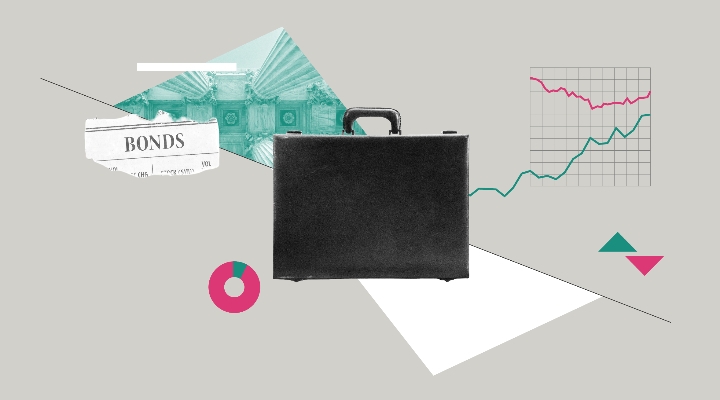
Coupon-hunting investors found rich opportunities in the last dividend season, but owning equities is not the only way to generate yield. There are plenty of bargains to be found in fixed income if you look beyond government bonds – particularly in higher-yield segments such as high yield and emerging market bonds.
Remember: there are big differences between stocks and bonds. Shares are financial securities representing a share in capital of a company. Bonds, on the other hand, are debt securities for the issuer and credit securities for the buyer. They are used by governments and companies to finance themselves, and entitle the buyer to repayment of the principal on maturity, plus interest payments.
As such, stocks are investments in the potential success of a company, while bonds are investments in the credit value of the company or organisation itself.
"This represents a fundamental difference in the way investors take on risk," explains Jeremy Cunningham, investment director of fixed income at Capital Group, in a 12 August note. "What is positive from a fixed income perspective may not necessarily be positive for equity holders, and vice versa."
What Moves a Bond's Price?
Factors that can lead to an increase in a share price include profit growth, share buybacks, mergers and acquisitions, and capital expenditure (capex). Conversely, a reduction in dividends or capex or the sale of assets to strengthen the balance sheet can be positive factors for corporate bond investors.
In times of market turbulence, moreover, stocks and bonds do not react in the same way.
"During market downturns, investors focus more on the survival of companies, rather than on their future growth potential. Therefore, before stock prices start to recover, bonds tend to rise faster," Cunningham explains.
Types of Bonds for Coupon-Hunting Investors
Bonds are a portfolio diversification tool. Low-risk government bonds are usually used defensively. However, other types of bonds can be used to generate income. In this case, investors must be willing to accept a little more risk and sensitivity to stock market trends.
High-yield bonds, for example, are corporate bonds that offer high yields against a higher risk of issuer default. Emerging market debt also tends to offer higher yields in the face of greater risk.
Examining 20-year data from a combination of global equity and high-yield and emerging market bond indices, Cunningham found it is possible to achieve a high level of return compared to a purely fixed-income strategy, with lower volatility than an equity-only allocation.
"Emerging market government and corporate bonds and high yield bonds are among the most suitable instruments for portfolios that aim to generate high income," explains Nicolò Bragazza, associate portfolio manager at Morningstar Wealth.
"These types of bonds in fact offer usually higher yields than traditional government bonds and even higher quality corporate bonds and this extra-return is measured by the credit spread."
Is Now a Good Time to Invest in High Yield?
According to Justin Jewell, head of european high yield leveraged finance at RBC BlueBay, "in today's world, investors in the high yield segment can realistically expect returns in the range of 8-9%. Not so long ago, yields were half that," he says. But this also carries the risk of rising default rates, which in 2021 and 2022 were at levels close to zero.
"The challenge that will slightly reduce yields over the next two to three years is that defaults are expected to return to 2.5-3.5%," Jewell said in a note in late July.
"After the historic rate hikes, companies are operating in a world of higher capital costs and some may struggle during this period."
Investors also have to take into account that high-yield bonds are very sensitive to the economic cycle as credit spreads tend to rise at times of increased market tension, causing a reduction in the value of these bonds.
"This implies that these bonds do not normally offer diversification relative to equities," Bragazza points out.
"Moreover, unlike equities, their yield is capped on the upside, which makes their risk/return profile less attractive when credit spreads are particularly compressed, especially for those portfolios whose main objective is long-term capital growth and not the generation of a high level of income."
What are the Benefits of Investing in Emerging Market Debt?
Emerging market debt is an alternative for those in search of high yields. It can be in hard currency (dollar) or in local currency. The latter generally carries higher risks, including currency volatility, political uncertainty and sovereign debt default – and all this against potentially higher and more diversified returns.
"Investing in emerging market government bonds can not only be useful to generate extra income but also to benefit from the possible appreciation of the currencies in which they are issued," says Bragazza.
"This makes them particularly attractive because the currency can offer not only additional yield, but also diversification, although not as reliable as that offered by currencies perceived to be of high quality, such as the dollar."
Over the past two decades, emerging market debt has experienced remarkable growth in terms of breadth and depth of the country spectrum, and the number of issuers.
"Issuances have increased, thus improving liquidity, while yield curves have reached a more mature stage, allowing active investors to gain value through positioning on different maturities," remarked Flavio Carpenzano, investment director of fixed income at Capital Group in a 5 August note. Today, this market is worth nearly $4 trillion (£3.1 trillion).
The Best High-Yield Bond Funds and ETFs
For those interested in looking beyond government bonds, below we present the best high-yield bond funds, selected according to Morningstar Medalist Rating and with a Morningstar Star Rating of at least three stars. The funds are sorted by "average coupon," an indicator calculated by weighting the coupon of each bond by its relative weight in the portfolio. It helps to understand whether the fund holds more high-coupon or low-coupon bonds.
Below you can find emerging market bond funds in local currencies, selected on the basis of a positive Morningstar Medalist Rating and a Star Rating of at least three stars. The funds are sorted by average coupon.
2
We now turn to the ETFs available in Europe. We have selected the best ones according to the Medalist Rating in the Euro high-yield and emerging local currency bond categories.
































